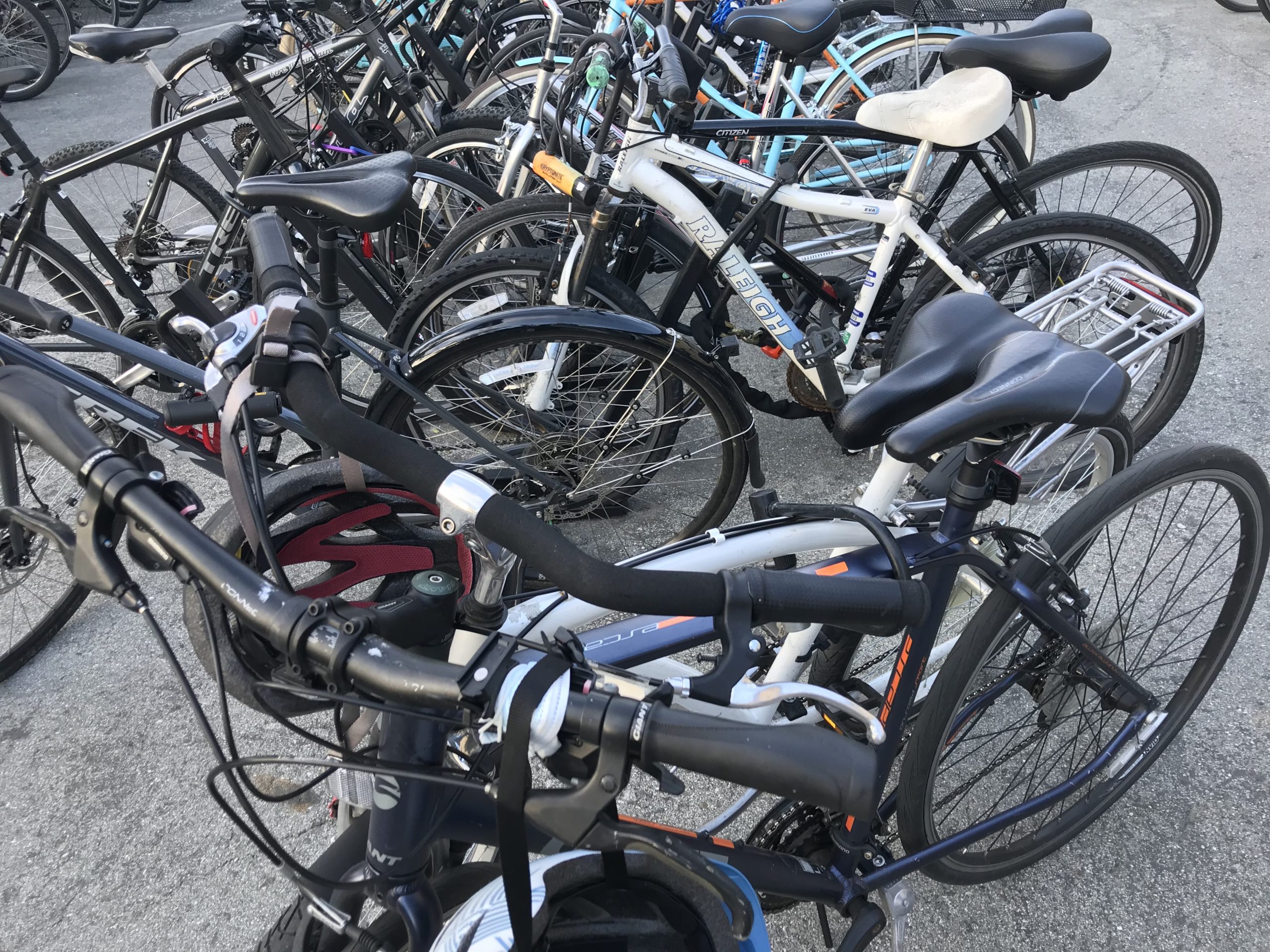In “Frosh Footprints,” Jenny Wang explores Stanford during her first quarter on the Farm, musing on her discoveries and realizations about campus culture.
It’s Sept. 17 — the much anticipated day for around 1,700 incoming frosh students at Stanford, including myself. As my family and I haul luggages, boxes and miscellaneous items into my dorm at Casper Quad, a strange sight stops me.
Before you start guessing, it was not the adorable chubby squirrels crossing the street or enthusiastic RAs holding colorful pom-poms in front of check-in signs, but three lonely wheels each occupying a space on the biking racks.
“Huh?” my mom let out in a questioning tone.
I burst out laughing.
It was both confusing and hilarious at the same time, and I couldn’t help but wonder what the owners of these bikes must have felt when they discovered that the main body of their bike was gone.
As NSO progressed, I kept learning about upperclassmen tales of tragically losing their bikes at various places on campus. I heard warnings against bringing vehicles to the CalTrain station, advice on which type of U-lock to get, and stories suggesting that certain bike models, preferably second hand or not too fancy, were less likely to be taken. Some even go as far as intentionally de-beautifying their brand new bikes in hopes of dissuading potential thieves — spray painting their entire vehicle in bright colors or covering it with random stickers.
Between now and the end of October, data from the campus bike shop estimates that about one in ten newly sold bikes will get stolen on average. Hotspots include the Medical Center, Escondido Village, Oak Creek Apartments and Main Quad, where large roads lower passerby suspicions.
“I heard it is super inevitable,” said Elena Li ’28, a frosh student living in Donner.
How do these prevalent thefts affect day-to-day student experiences?
Last year, as a prospective student undergoing the application process, I visited campus to meet a high school friend who was in her first year. However, she lost her bike wheels after physics class and was consequently late to our meet-up. Though entertaining in retrospect, this anecdote illuminates the resulting hassles of such an occurrence.
The impact of theft is “substantial,” said Omar Barbara, who has managed the Campus Bike Shop since 2005. “I get people that are from upset to just crying.”
Losing a bike is not only logistically annoying — causing one to be late to a scheduled commitment — but also a financial burden, as most bikes are priced between $200 to as much as $3,000. This is not to mention the time and energy devoted towards searching for a new model, making the purchase and physically picking it up. Any student balancing their full-time class schedules, club meetings, social activities and sports would be understandably derailed by a bike theft incident.
“They feel victimized, Barbara said, “So they tend to buy a bike that’s not as good for them, a cheap one that’s messy and broken, and that ruins their experience over time.”
As a frosh learning about this phenomenon for the first time, many questions came to mind.
Why has such a top school for CS and engineering not yet brainstormed solutions to this mundane problem? Couldn’t more of Stanford’s funding go towards installing cameras on the bike racks? How would the logistics look if campus police devoted more resources to tracking which cars came onto campus and left with bike parts?
In addition to negatively impacting student experience, bike theft culture has the larger ramifications of damaging the institutional reputation of our school. Many from outside of campus express incredulity upon hearing about this phenomenon.
“One time in front of our yoga dining hall, I saw someone using a power tool on a bike in broad daylight and they cut the lock,” said Shefali Doshi ’25. “Someone took a video, but no one stopped them.”
So, what measures does Campus Bike Shop recommend for students?
- Ensure the bike is locked securely to a rack, not to itself.
- Check the name, model, color and registration or serial number of the bike in case of it getting stolen.
- Report the loss of a bike to the police immediately to increase the possibility of getting found.
It’s Oct. 1, a typical weekday with slightly higher temperatures than normal. The sun shines bright on Jane Stanford Way while some 13,000 students pedal hurriedly on their way to class. Hopefully this time, while we marvel at our school’s impressive biking culture, we will also have more internal peace knowing that our own vehicle is secure.
